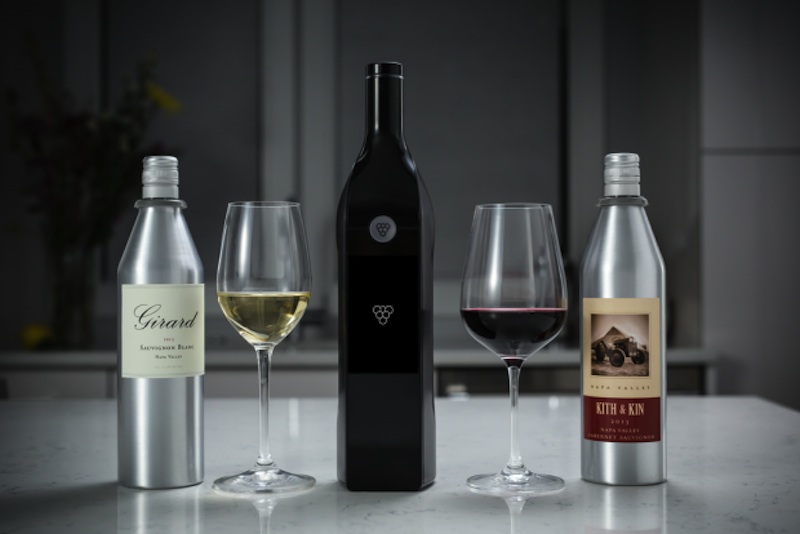
High-Tech Bottle Keeps Opened Wine Fresh for Weeks

This story was updated at 9:49 a.m. on May 12.
Many people enjoy an occasional glass of wine with dinner, but after a glass or two, what do you do with the rest of the bottle? Once opened, wine immediately begins to react with the air and spoil, so how can you avoid ruining your favorite vintage?
Now, a company called Kuvée has designed a device that it says can keep wine fresh for up to 30 days, and perhaps even longer.
What makes opened wine taste bad after just a few days? The culprit is oxygen, scientists say. As soon as you pull out a cork, air floods the bottle, displacing the gas that was trapped inside. Fresh air contains oxygen that is absorbed by the wine over the next few days. Oxygen reacts with phenolic compounds, the chemicals that produce wine’s flavor and aroma. These reactions, known as oxidation, change the chemical structure of the phenolic compounds, dulling and flattening the taste and smell of the wine. [11 Interesting Facts About Hangovers]
Kuvée (pronounced "koo-vay,"after the French word for a special allotment of wine) has created a bottle that can help wine stay fresh, by keeping air out, according to the company.
The Kuvée is a two-part system: a sealed capsule that stores the wine and a hollow sheath that is used to pour. When the capsule is inserted into the Kuvée bottle, it looks and feels much like a standard wine bottle. And that was an intentional part of the design, said Ed Tekeian, chief technical officer for Kuvée.
“We wanted to have something that pours like a bottle of wine – versus a coffee maker that sits on your countertop,” Tekeian told Live Science.
Sign up for the Live Science daily newsletter now
Get the world’s most fascinating discoveries delivered straight to your inbox.
The key to the Kuvée system is a patented, multistage valve in the neck of the capsule that replaces the cork. An outer, sealed valve opens only when a pin inside the Kuvée bottle punctures it. The valve reseals when the capsule is removed from the bottle, the company said.
For the inner valve, the Kuvée team borrowed an idea that is more commonly found in medical technology. This so-called "check valve," often used in dialysis equipment, only allows liquid to flow in one direction, limiting what can pass in reverse. When the bottle is tipped to pour, wine puts pressure on a flap in the valve, pushing it open so that wine can flow out, the company said. But when the bottle is upright, the flap is tightly closed, preventing air from entering the bottle.
"The Kuvée bottle is never truly open," so less than 0.1 grams of oxygen enters the bottle as the wine pours, Tekeian said. And he has the data to back up his claims. The Kuvée research team measured the accumulation of dissolved oxygen in wine over time and the decline of a chemical called sulfur dioxide, which indicates how much oxidation has occurred. Sommeliers also evaluated the same samples, he said. At the end of 30 days, the wine in a Kuvée bottle is similar in both chemical makeup and taste to wine that has been in a standard corked bottle for three days, according to Tekeian.
The Kuvée bottle comes equipped with a full color screen so you can learn more about the wine you are drinking. The Wi-Fi-enabled "smart" bottle also allows you to order more wine, provide feedback about your preferences, and receive suggestions about other wines you might enjoy. The Kuvée bottle and four bottles of wine are available for $199 through pre-orders on the company’s website. Additional bottles of wine can be purchased at their usual retail price ($15 – $50), and orders will begin shipping in October to California and Massachusetts, the company said.
Editor's Note: This story was updated to correct the amount of oxygen that enters the bottle as the wine pours, and to adjust the estimated shipping date.
Follow Live Science @livescience, Facebook & Google+. Original article on Live Science.









